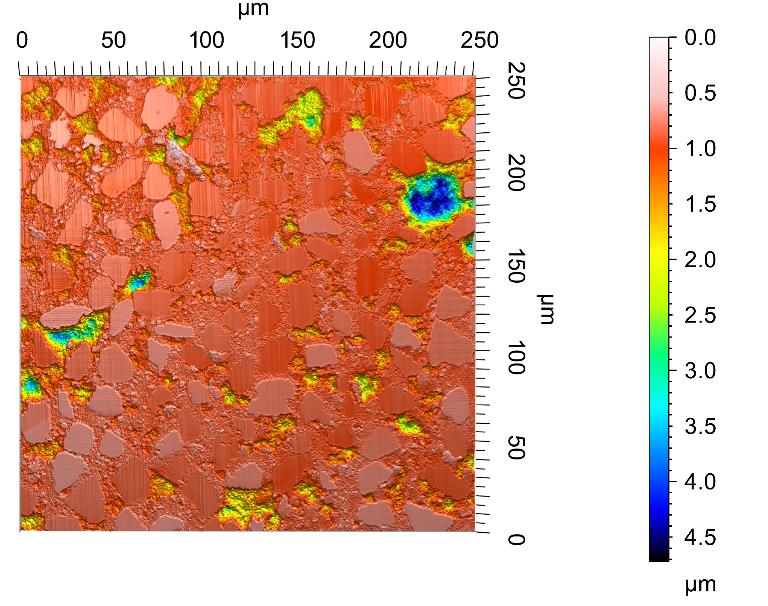The extraction of raw materials from the seabed places extreme demands on the components used. The service life of pump bearings and seals in particular is drastically reduced — due to high salt content, strong currents and abrasive particles in the pumped medium. In order to ensure the necessary longevity and reliability under these conditions, a sound understanding of materials and targeted material solutions are required.
The joint project "SubseaSlide" therefore developed and qualified wear-resistant, energy-efficient and reliable sliding components for subsea applications. The project consortium has shown that diamond-SiC composites are an ideal material for lubricated applications under deep-sea conditions and has tested an economical product design for mechanical seals. The new material solution not only improves maintenance intervals and operational safety, but also contributes to resource and energy efficiency.
As demand for natural resources increases, their extraction from the seabed is also coming into focus. It is crucial that the systems used for drilling, extraction and transportation can be operated in a fail-safe and durable manner. However, the conditions in the deep sea — high salt content, enormous current velocities and extreme operating temperatures — drastically increase the risk of damage. In key components such as plain bearings and mechanical seals, for example in pumps or drilling rigs, defects can even lead to a complete standstill. The result is not only long downtimes and high maintenance costs, but also risk to the continuous extraction of raw materials — and therefore to the security of supply for entire branches of industry.
What is needed here are material innovations that enable a service life of up to 30 years and function with media lubrication — i.e. with seawater containing particles. The tribologically stressed material must not only withstand the extreme operating conditions, but must also be economical to produce. Last but not least, operation under deep-sea conditions can only be ensured in the long term if the developed systems work reliably.
The BWMK-funded project "SubseaSlide: Wear-resistant, energy-efficient and reliable components for subsea applications" was dedicated to these challenges: The main objective of the project was to develop and qualify high-performance bearings and dynamic seals for pumps and units used in subsea applications.
Innovative material development
Diamond-SiC composites were developed in the project consisting of ceramic materials based on silicon carbide (SiC) with diamond content of up to 60% by volume. A targeted inlay technology makes it possible to apply the expensive diamond reinforcement only to locally high-stress areas. As a result, both the material costs and the effort involved in component processing can be significantly reduced — while maintaining high corrosion and wear resistance under extreme maritime conditions.
Efficient machining and economical production
The machining of these hard, diamond reinforced SiC materials posed a particular challenge. In order to optimize the production processes, laser-assisted grinding and cutting processes as well as electroerosive processes were successfully adapted in the project. These technologies enable precise production, low-damage machining while at the same time increasing economic efficiency in production.
Proven performance under realistic operating conditions
The manufactured components — including axial and radial bearings as well as mechanical seals — were extensively tested at Fraunhofer IWM under realistic conditions. The tests confirm an extremely low wear rate, even under high mechanical loads and with media containing particles. The materials also demonstrated exceptionally stable friction behavior — even under changing operating conditions.
Improved quality for the extraction of raw materials from the seabed
The results are promising — both in terms of technical performance and economic feasibility. Future work will aim to further improve the long-term properties and specifically increase the implementation of these new material solutions among operators of subsea facilities.
 Fraunhofer Institute for Mechanics of Materials IWM
Fraunhofer Institute for Mechanics of Materials IWM